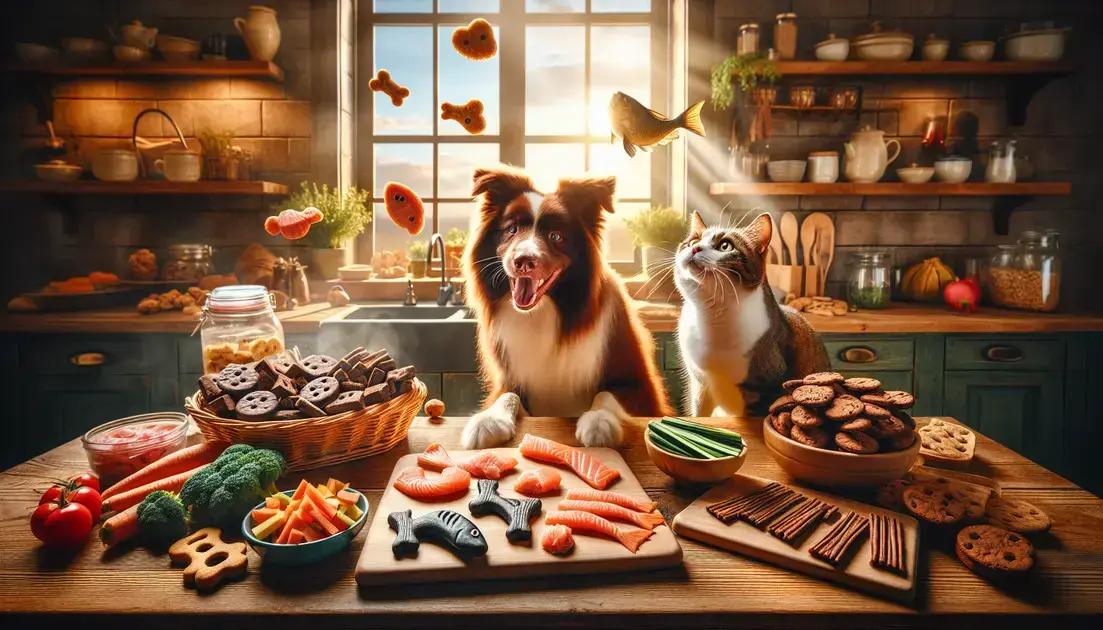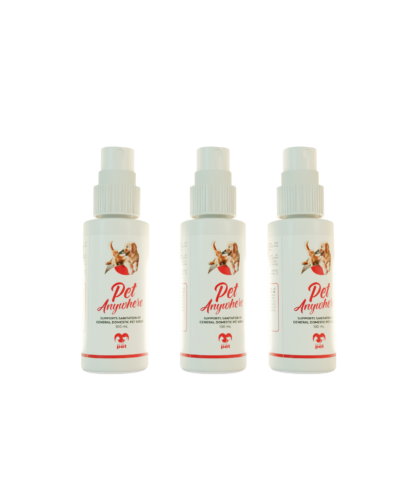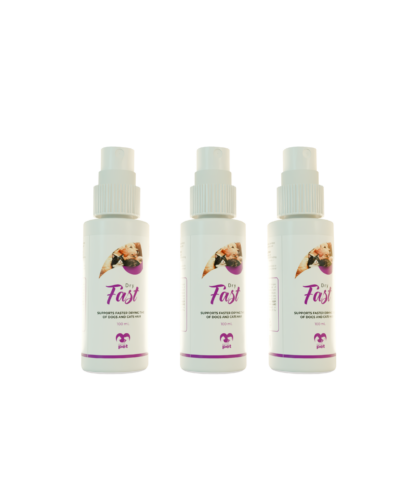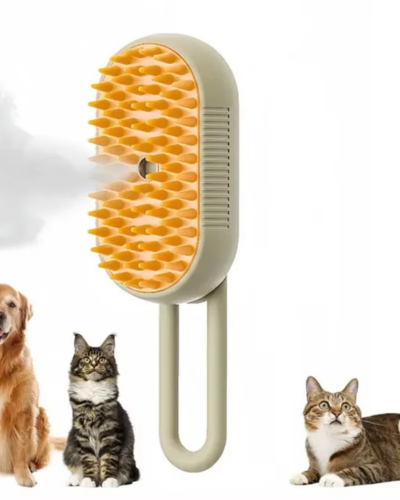Free delivery for orders over £45

Top 5 Healthy Homemade Treats for Your Dog and Cat
Table of Contents
Discover the world of homemade pet treats that ensure your furry friends enjoy safe and healthy indulgence. Creating healthy dog snacks and crafting delightful cat treat recipes at home not only allows you to control the ingredients but also caters to your pet’s unique dietary needs. Dive into this guide as we explore essential ingredients, simple recipes, and tips to avoid harmful additives while keeping your pet’s nutrition balanced.
Why Homemade Treats Are Best for Pets
Homemade treats offer unparalleled benefits for pets when compared to store-bought options. By creating your own, you have complete control over the ingredients, ensuring you provide only what’s best for your dog or cat. All-natural ingredients mean fewer chances of exposing your pet to artificial additives or preservatives often found in commercial products.
Moreover, homemade treats can be tailored to meet your pet’s specific dietary needs and preferences. This flexibility allows you to address any allergies or food sensitivities they might have. For example, if your pet is lactose intolerant, you can easily substitute dairy products with alternative options that are safe for them.
Not only do these treats cater to health requirements, but they also bring mental stimulation and enjoyment. Engage your pet’s curiosity by experimenting with a variety of flavours and textures. This can make treat time a more enriching experience.
Environmental benefits are an added plus. By making treats at home, you reduce packaging waste, which contributes to a more sustainable lifestyle. Reduce your carbon footprint by opting for local and seasonal ingredients whenever possible.
Beyond all these reasons, creating homemade treats is an excellent opportunity to strengthen the bond between you and your pet.
The care and effort you put into making them can translate into trust and affection from your furry friend.
Essential Ingredients for Dog Snacks
Whole Grains and Oats
Whole grains, like brown rice and oats, offer essential carbohydrates and fibre that support your dog’s energy levels and digestion. Oats are particularly great because they are easy on the stomach and provide a healthy dose of vitamins and minerals.
Lean Proteins
Lean proteins, such as chicken and turkey, are crucial for muscle development and repair. These meats are not only delicious to dogs but also low in fats, making them a perfect choice for a healthy treat ingredient.
Sweet Potatoes and Pumpkin
Sweet potatoes and pumpkin are superb sources of fibre and beta-carotene, which converts to vitamin A. These ingredients can help keep your dog’s digestive system functioning smoothly while also giving a boost to their immune system.
Fruits for Natural Sweetness
Incorporating fruits like apples and blueberries adds natural sweetness without resorting to sugary additives. These fruits are loaded with antioxidants and vitamins, promoting overall health and wellness in your dog.
Healthy Fats
The inclusion of healthy fats like flaxseed and fish oil is essential for maintaining a shiny coat and healthy skin. Omega-3 and Omega-6 fatty acids support skin health and play a role in brain development and function.
Simple Recipes for Cat Treats
If you’re looking to provide your feline friend with tasty and nutritious snacks, simple recipes for cat treats can be your go-to solution. Creating homemade cat treats can help you ensure your cat is eating quality ingredients, free from unnecessary preservatives and additives commonly found in store-bought treats.
One easy recipe involves using ingredients that cater to a cat’s carnivorous diet. Consider whipping up some tuna treats; it only requires a can of tuna in water, an egg, and some oat flour. Mix the ingredients until smooth, form small balls, and bake them at a low temperature to retain most of the nutrients.
For cats that enjoy a bit of variety, a simple combination of chicken and catnip can be quite delightful. Use cooked chicken breast, finely shredded, a sprinkle of catnip, and some rice flour. Blend these ingredients until they stick together, then roll out small pieces and bake them.
It’s important to remember that cats have specific dietary needs. Including only essential nutrients in these recipes ensures their health is maintained. Lean proteins and whole foods support their digestive health, while avoiding additives helps reduce the risk of allergies.
Lastly, be mindful of portion sizes since treats are just that—a treat. Keeping each serving small allows your cat to enjoy these homemade delights without overloading on calories, which is essential in maintaining their overall health and well-being.
How to Store Homemade Pet Treats
Proper storage of homemade pet treats is crucial to maintain their freshness and nutritional value. It’s essential to ensure these treats remain safe and enjoyable for your pets. Follow these best practices to store homemade goodies for your dogs and cats.
- Use Airtight Containers: Store your pet treats in airtight containers to prevent exposure to air, which can cause them to become stale or develop mold.
- Refrigeration: Treats made with fresh ingredients, such as meat or dairy, should be kept in the refrigerator to maintain their quality and prevent spoilage.
- Freezing for Longevity: If you’ve prepared a large batch of treats, consider freezing them. This will extend their shelf life considerably. Be sure to label them with the date to keep track of freshness.
- Choosing the Right Storage Area: Choose a cool, dry place away from direct sunlight for storing treats to protect them from heat and humidity.
By following these storage tips, you can ensure that your homemade pet treats remain fresh and nutritious, providing your pets with safe, healthy snacks.
Avoiding Harmful Ingredients
When crafting tasty snacks for your furry friends, knowing which ingredients to avoid is crucial to keep them safe. Pets can’t metabolise certain foods as humans do, so it’s essential to steer clear of some substances that may be toxic or harmful to dogs and cats.
One ingredient to avoid is chocolate. Chocolate contains theobromine, which is toxic to both dogs and cats. Even small amounts can cause significant health problems, such as heart palpitations, seizures, or even death.
Grapes and raisins may seem like a harmless treat, but they can lead to kidney failure in dogs. Even small quantities can be harmful, so it’s best to skip these entirely.
Keep your treats onion and garlic-free. These vegetables can cause gastrointestinal irritation and damage red blood cells in both dogs and cats. This can lead to anaemia, weakness, and even more severe complications.
Cats should never ingest caffeine. Found in coffee, tea, and certain energy drinks, caffeine can be potentially fatal for felines. Make sure your treats stay clear of any caffeinated ingredients.
Artificial sweeteners, especially xylitol, should be completely avoided in homemade treats. Xylitol can cause insulin release in most species, leading to liver failure and hypoglycemia in dogs.
Always double-check new ingredients before adding them to your homemade pet treats. What seems harmless for humans can be catastrophic for your pets.
Balancing Nutrition in Pet Treats
When creating treats, it’s crucial to ensure they offer balanced nutrition that contributes positively to your pet’s diet. Pets need a mixture of proteins, carbohydrates, fats, vitamins, and minerals. When preparing homemade treats, consider incorporating these elements.
For proteins, ingredients such as chicken, beef, or fish are excellent choices. Ensure that the proteins are cooked well and free from bones to prevent any choking hazards. Carbohydrates can come from whole grains like brown rice or oats, which provide energy and aid digestion.
Fats are equally important, but moderation is key. Healthy fats from sources like fish oil or flaxseed can improve the health of your pet’s coat and skin. Do not forget about vitamins and minerals, which can be added through vegetables such as carrots, peas, or sweet potatoes. These not only offer essential nutrients but also add flavour and texture your pet will enjoy.
While balancing the nutrition, keep the treats’ calorie count in mind. Treats should only make up a small percentage of their daily caloric intake to avoid weight gain. Consider keeping portion sizes small, especially for smaller pets.
Consult with a veterinarian to ensure the ingredients chosen are safe and suitable for your specific pet, especially if they have dietary restrictions or health conditions.
By carefully selecting each ingredient, you can create treats that are both nutritious and delicious for your furry friends.
Customising Treats for Your Pet’s Needs
Every pet is unique, with individual preferences and dietary needs. Customising treats for your pet can ensure not only that they enjoy their snack but also that it serves their health needs. Consider incorporating specific ingredients that will address any health concerns or specific diets your pet might require. For instance, if your dog has joint issues, adding glucosamine-rich supplements into their homemade treat can provide therapeutic benefits. Similarly, a cat with a sensitive stomach might benefit from a treat made with hypoallergenic ingredients.
Nutritional Balance
Ensure the treats maintain a nutritional balance. This could mean selecting proteins, fibres, and fats that meet your pet’s dietary requirements while offering an appetising taste. Pay attention to portion sizes, as even healthy treats should be given in moderation to maintain optimal pet health.Tailoring flavours can also make the treats more appealing to your pet, whether by adding a favourite spice or opting for a texture they prefer. Remember that the main goal is to create a treat that is not only a reward but also a health benefit for your pet.
Flexibility of Ingredients
The best part of customising treats is the flexibility to experiment with seasonal fruits or vegetables, ensuring your pet gets varied nutrients throughout the year. Always introduce new ingredients gradually and observe your pet’s reaction to them.By customising your pet’s treats, you can turn snack time into an opportunity to support their well-being while also providing enjoyment and satisfaction.
-
Dry Fast
£10.00Original price was: £10.00.£8.00Current price is: £8.00.
Contact Us
- +44 07391626201
- info@promotepet.com
- 16, Cromwell Close - Oxford - UK
COPYRIGHT © PROMOTE PET. ALL RIGHTS RESERVED. © 2024 Chofard Enterprise Ltd. Chofard Enterprise is a company registered in England and Wales with a company number 13073779 VAT number GB 370644889. 16, Cromwell Close, Oxford OX30RW, United Kingdom – trading as Promote Pet Online Shop.











